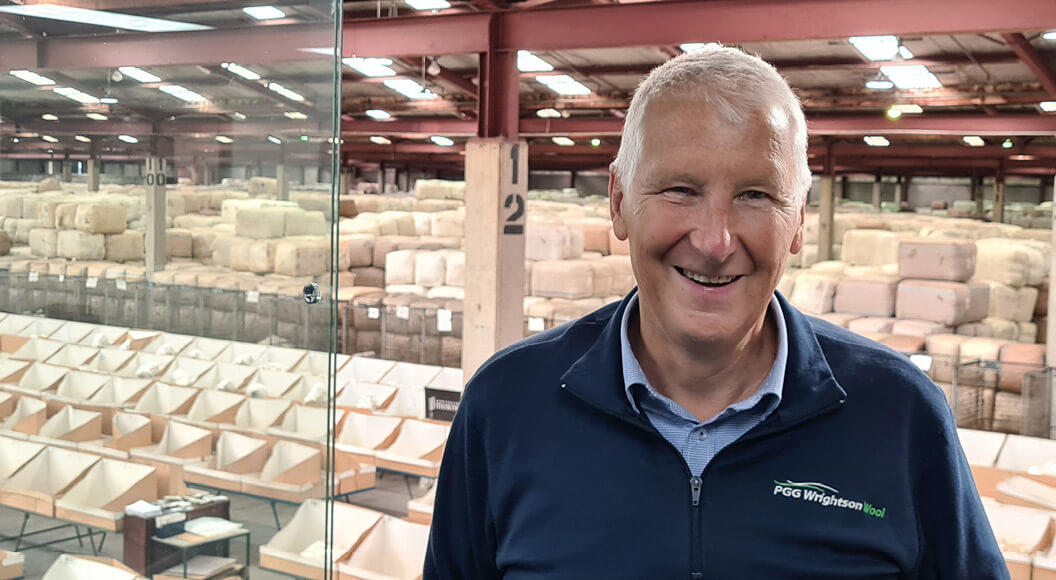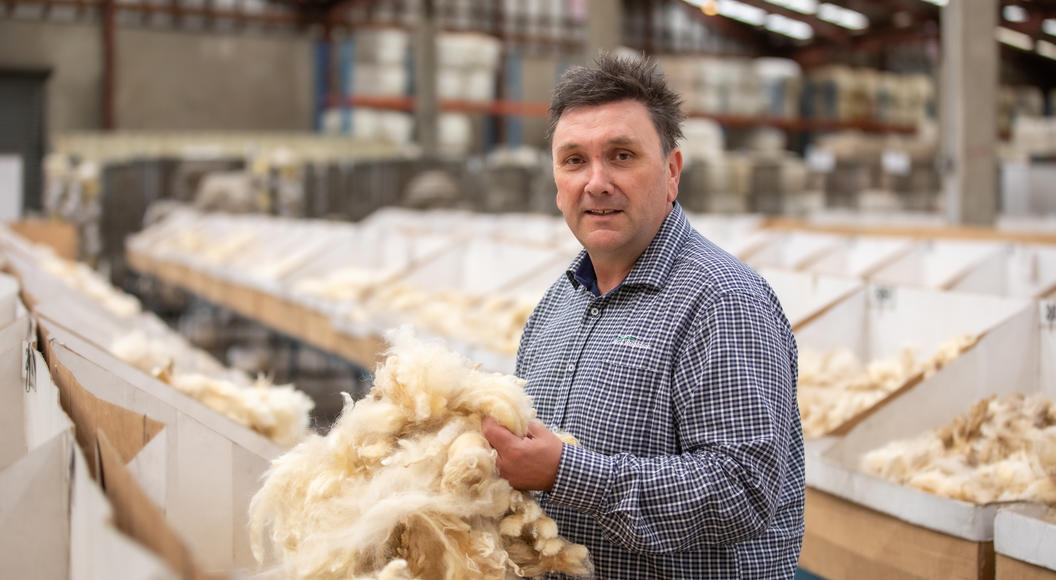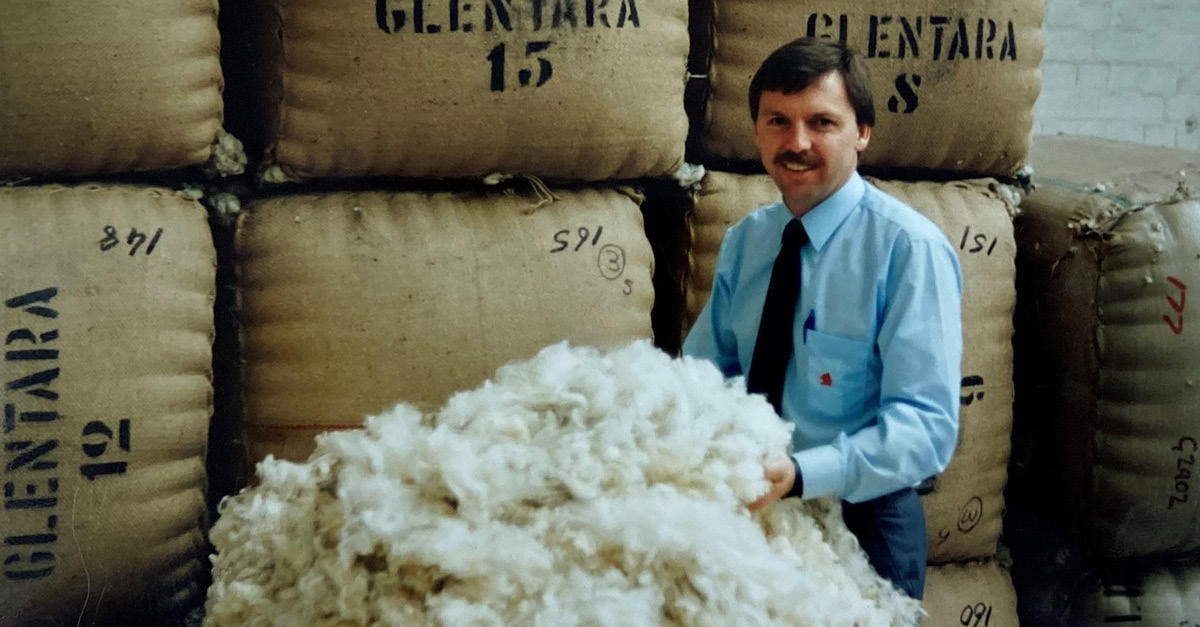
Hammer comes down on 50 year career
For PGG Wrightson South Island wool manager Rob Cochrane 50 years in the stock and station industry has flashed by.
On 3 December 1973, aged 18 and fresh out of Christchurch Boys’ High School, Rob started work at Dalgety NZ Ltd, Christchurch.
“I was the mail boy: sorting mail, licking stamps, running errands, paying out wages, and doing the banking. It was a great way to learn clients’ names and addresses.”
He spent time in both the wool and livestock divisions, as well as familiarising himself with other parts of the company such as shipping, insurance, real estate, grain and seed, merchandise, and travel.
“Livestock training centred around the Addington saleyards, learning to assess different classes of stock. Wool gave us plenty of opportunities to earn a few extra dollars working at night in the on-site wool dump. Day times we spent in the bin room, learning wool types and classing. Local wool auction sales were an important part of the training.”
In mid-1975 Rob became a junior livestock agent in Rangiora, gaining promotion and shifting over the following few years to Culverden, then Southbridge.
“In those days agents were given company houses at minimal rental. In Southbridge I met my lovely wife Julie, who just happened to live across the road from the company house.”
Working as an agent enabled Rob to develop auctioneering skills, covering all aspects of livestock, including clearing sales.
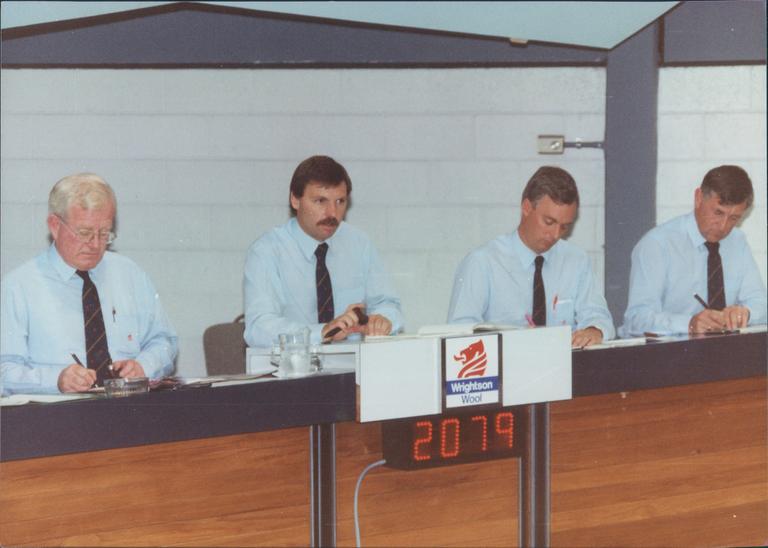
“At the start you were given pigs to auction. If you could do that, you were moved on to sheep, then finally cattle. Once I was even asked to auction off a couple of racehorses from the birdcage at Riccarton Racecourse. It was a good job there was an expert handy, and I kept a close eye on him!”
In mid 1982 Dalgety’s Christchurch wool department needed an auctioneer. Developing wool valuing and sales skills, Rob also learnt all aspects of the wool business, including trips with local livestock agents to canvas wool growers in Marlborough, Nelson, West Coast, and broader Canterbury. With his ‘patch’ extending far to the east, visits to the Chatham Islands were a special feature.
“Travelling from either Christchurch or Wellington by Safe Air’s Argosy aircraft meant sitting inside a pod approximately similar to a normal domestic plane, complete with cabin crew and a packed lunch! Often there was considerable cargo on board each way.
“For a time more freight was being sent down to the Chathams for building projects than fish product coming back the other way, so Safe Air began flying wool bales out. From memory, up to 80 bales would fill the Argosy for delivery to either Christchurch or Blenheim, where it was uplifted by the designated selling broker. Because of the sheer cost of freight by sea, a Chatham Island wool bale often weighed more than 200 kilograms, meaning with 80 bales on board, the aircraft would have used every inch of the runway to achieve take off!
“Once there, travel to the Island’s various farms was by rental Land Rover. If the weather was suitable a short flight to Pitt Island enabled a day on the farms across there before the return flight.”
On one memorable occasion, Rob was put in charge of delivering an extra cargo item.
“I hopped into the rear seat of the local Chatham Air Cessna aircraft, a push-pull engine configuration piloted by Craig Emeny. Someone leaned into the cabin and handed me a baby, advising: ‘There’ll be someone on Pitt to meet you and take the baby.’ I still don’t know whose child it was, though on arrival I handed it over safely, and obviously had the knack of holding the bottle the right way for it to feed while we were airborne!”
When flying to Pitt Island was not an option, he had to organise passage on a fishing vessel.
“Once we travelled across in big seas and thick fog with several DOC personnel on board. They were heading to Rangitira and the Black Robin sanctuary. I was so seasick the skipper decided to put me off at Pitt first, before going to Rangitira with the DOC people. However, that took close to two hours. I was happy to disembark, though dreading the return trip later in the day. Fortunately the weather cleared, and when our group was dropped back to the wharf by the ‘school bus,’ which over there was a flat-deck ute, the skipper told us to hold on tight. Fortunately we made it back to Owenga in about 40 minutes, with no time to feel crook!”
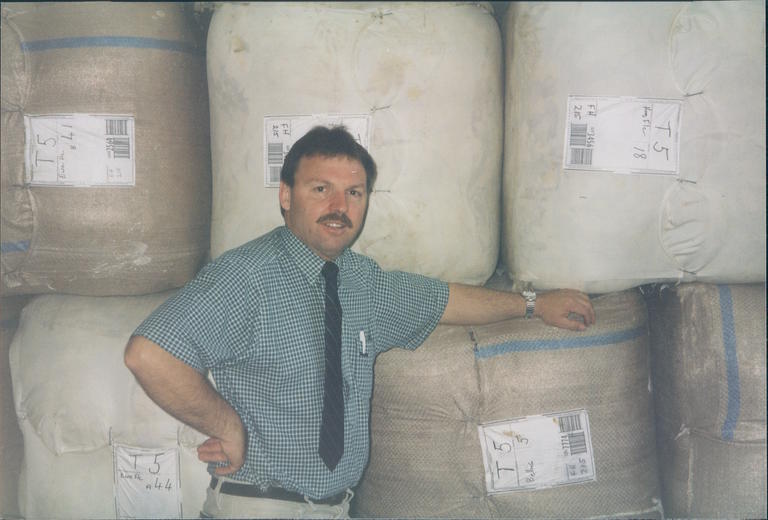
In the early 80s the industry supported eight wool auction centres.
“They were in Auckland, Napier, Wanganui as it was spelt then, Wellington, Christchurch, Timaru, Dunedin and Invercargill. That’s down to two now of course. I was auctioneer at the last Timaru wool auction, held in 1983.
“Consolidating the auction centres was a big change. Back then wool was displayed in broker stores for exporters to value, shown in farm bales with the cap sewn on and one corner opened to reveal the wool. It was auctioned in the town where the wool was stored.
“Grab sampling technology led to plenty of change, enabling centralisation of a show floor to value the samples, a reduction of auction centres, less need for the exporters to travel, and smaller exporter teams.”
Wool auctions have been central to Rob’s career. He reckons he to have conducted between 800 and 1000 through the years, selling some 10 million bales.
“Compared to livestock, auctioning wool is totally different. With stock many people in the gallery are essentially amateur buyers, farmers going in once or twice a year to buy store stock. Wool buyers attend many more auctions and are basically professional. They know what they can spend and are focused on what to spend it on. As an auctioneer we work for the vendor. Extracting the last bid is vital, meaning the underbidder is a very important part of the system.
“Wool buyers bid by voice, and as the same people are in the auction room every week, the auctioneer knows each voice. There were around 45 at Christchurch wool auctions when I started, down to around 15 now.”
During a stint in Palmerston North to complete the Massey University Wool and Wool Technology Diploma, Rob carried on auctioneering duties, travelling to Wellington on a Wednesday for the Thursday auctions. He also conducted regular Wellington auctions for Auckland-based Wiri Wool, which represented several wool broker companies.
In 1984 Crown Corporation bought Dalgety NZ and the company became Dalgety Crown, then in 1986 after merging with Wrightson NMA it first became Wrightson Dalgety, then Wrightson.
“Large wool catalogues in the 80s meant long days on the auction bench, and at the height of the fine wool season it was not unusual to complete an auction well into the evening.”
In 1991 Rob co-founded a new Christchurch-based wool auction brokerage trading across the upper South Island.
“Starting a new business from scratch, developing and growing that business at a time when we had a young family was challenging, though rewarding,” Rob says.
It paid off when the business sold in 2000, and the new owner appointed Rob to manage its then South Island-wide wool broking operation, which he did for the following five years. More change came in 2005 when the newly merged PGG and Wrightson offered Rob the role of South Island Wool manager.
“During 2006 I had the opportunity to travel to Melbourne on several occasions to auction wool for the NZ Merino Company, then 50 per cent owned by PGG Wrightson. They were different to New Zealand wool auctions. There were more bidders in the Melbourne auction room than we had in Christchurch at the time, the auction tended to go quicker, and you had to get used to the Aussie twang: listening to them bidding was not the same sound you were used to.”
Shortly after the final merger a new entity, Wool Partners International (WPI) was established, including the PGG Wrightson Wool business.
“I became Wool Procurement Manager for WPI, with responsibility for all wool procurement staff. We were aiming to bring growers and brokers together to give the industry the resources and momentum it needed to make wool more profitable again in export markets.
“Our initial objective was to float the company with a nationwide capital raise through a series of roadshows, involving extensive travel from Whangarei in the north to Tuatapere in the south. While the travel and meetings were tiring, it was an enjoyable time, and fondly remembered.”
Most of the travel was by car.
“One memory is driving through the Forgotten Highway between Stratford and Taumarunui, with colleague Allan Jones at the wheel. Having travelled on them numerous times, Jonesy knew all those roads very well, though they were wet and muddy in places. WPI’s CEO was following Jonesy in a rental vehicle, with a couple of board members travelling with him. He obviously didn’t want to lose Jonesy, and kept close through the journey, by the end of which, when we arrived at our 10am roadshow meeting, the rental looked like it had been through a mud plug event. Maybe the CEO wanted to overtake Jonesy and maybe he was kept at bay, either by Jonesy’s rallying skills or by the board directors insisting on more cautious driving by their CEO.”
Shortly after, late at night and a little further north, the WPI convoy drove from the Rotorua roadshow to Huntly.
“We arrived at the hotel in darkness: six of us in two vehicles. We managed to raise the hotel manager and when our high-profile director rushed into the hotel reception first, towing her trundler bag behind her and with five blokes trailing in her wake, the quick witted manager asked us ‘All in one room then?’ Her answer was decisive: ‘No! Separate rooms,’ at which several of her followers were falling to the floor in hysterics. We’re still not sure whether the manager recognised one of New Zealand’s best known business leaders, Theresa Gattung!”
Along with everyone else involved with WPI, Rob was disappointed when the capital raise fell short.
“It was a once in a generation opportunity to make a difference. We had large numbers of farmers at several of the meetings, obviously very much in favour. If it had gone forward I think we would have had another wave of changes by now, creating different ways of operating. What we proposed would have been superseded by something even better by now. Younger farmers might have another crack at it in future, and change the way the wool industry does things, though that’s for another generation to work out.”
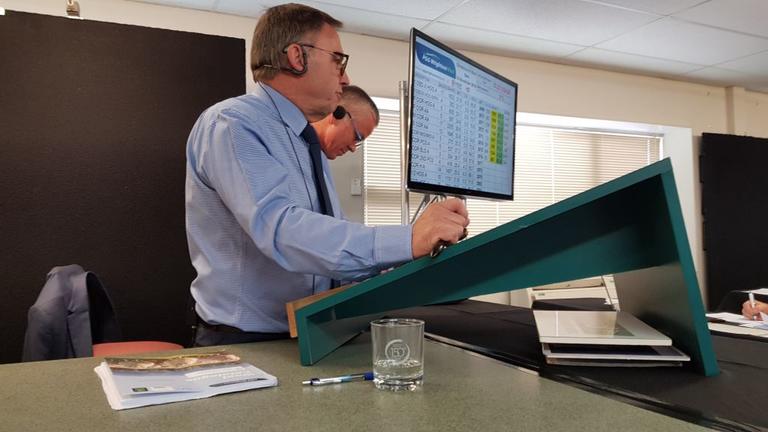
After WPI Rob put his PGG Wrightson uniform back on and resumed his role as South Island wool procurement manager.
“I joined the company thinking I’d be around for three or four years, and 18 years later, here I still am. While it has been tough to remain positive during the recent past as wool prices remained low and the number of sheep producing wool continually reduced, the wool industry is still a good one, with great people across all facets.
“Although I’m looking forward to enjoying more time with my wife, family and grandchildren, I’ll miss my fellow staff and wider industry contacts, both on a day-to-day basis and also across other business units within PGG Wrightson.”
Rob Cochrane retires on 16 February.


